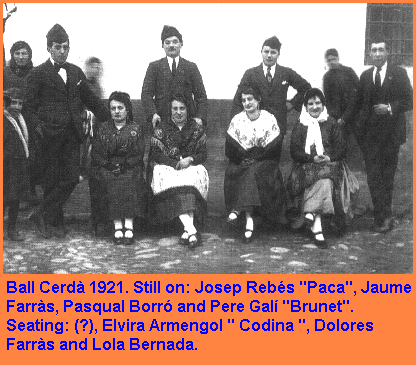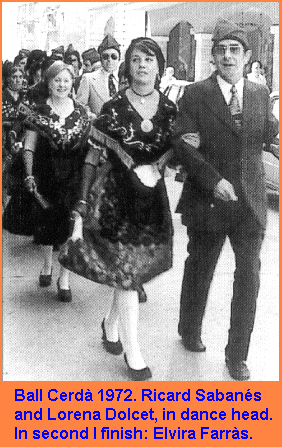 |
|
Ball Cerdà in the seat of the Market or, more well-known, like of Patalín. Photo of Ricard Lobo. (To click to see the great image but).
|
|
|
In the first place it is forced to say that the name of "Ball Cerdà", comes from Cerdanya, as far as his origin, at least as it is danced at the moment. We can date it, as other dances of equal cadence of the passages of dance (it dances plane), in century XVII. Yes we analyzed, but, its sequences, a transformation of a dance more primitive is guessed than it would make reference to a hymn pave. The importance that we can attribute to him is that it has stayed throughout the time almost without great alterations. Like an opened dance, mayores they have been masterful of youngest. Only small variations have affected the clothes of which we will speak to you more ahead. It is necessary to emphasize that the Seu d'Urgell does not conceive its Greater Celebration without the Ball Cerdà, so that, without giving it tells us, it has become the official dance of the city. We must also remember that it was danced, until before Civil war "1936-1939" by Carnival. It had, but then, a more serious air by the intervention of the "hunter", a farcical personage whom the attention of the public attracted, dress with short trousers, velveteen jacket, leguis and slippers "viguetanes". The grace of this malignant man was the one to surprise the confused ones of the seat while they watched the dance. With a cane it touched to them the buttock and, when turning itself these enharinaba, which towards laughing, mainly, to that they were protected in the balconies. This that we explained did Sunday of Carnival. |

